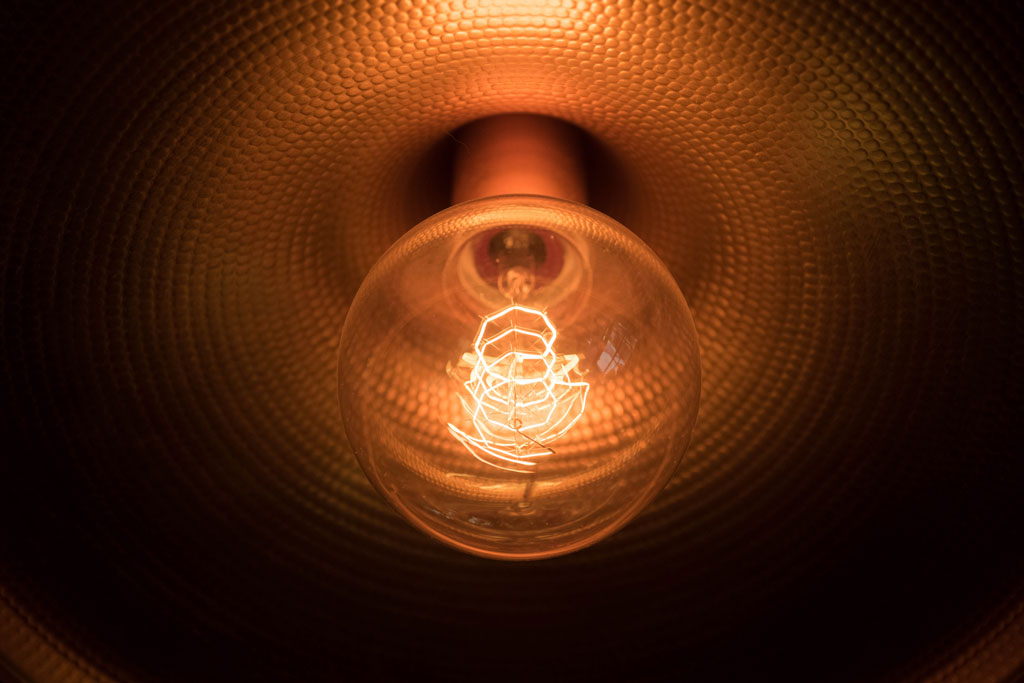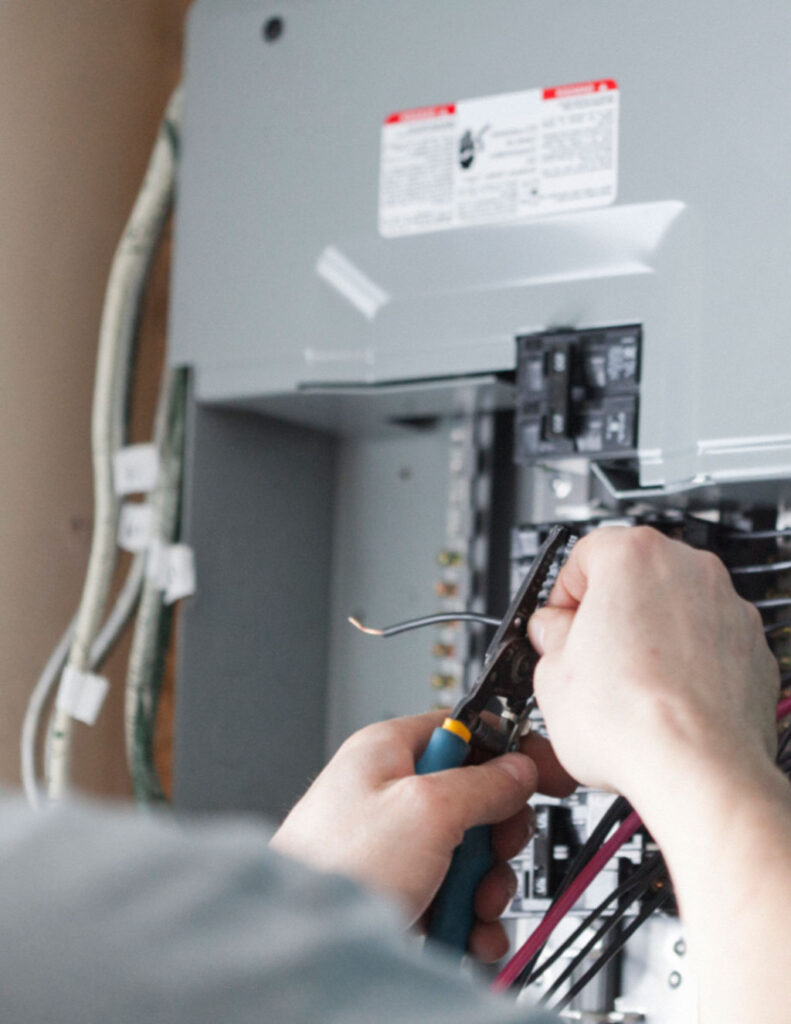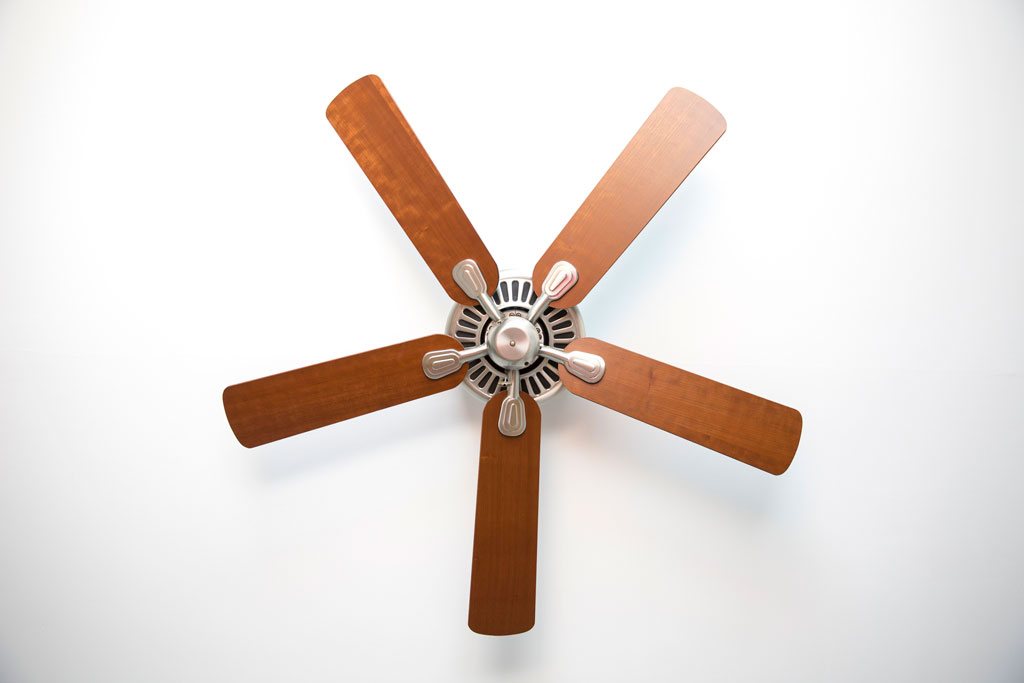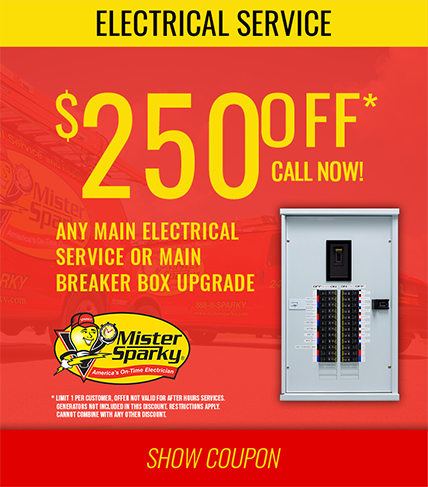Choosing A Dimmer? Insights From Your Trusted Electrician

Dimmers aren’t all the same. Therefore, choosing one is crucial to transforming your indoor space. Lighting is more than screwing in your light bulbs and flipping the switch. It is an art, and your chosen lighting differs from room to room. For instance, you might want family rooms to be well-lit when your kids are playing and might like the lights dimmed when you’re watching a movie. Dimmers play a huge role in helping you fine-tune what kind of lighting you need for what situation. Besides learning to choose a dimmer, you should also search for a licensed electrician to install them at your home. Not choosing the right dimmer or improper installation could result in issues such as a humming or buzzing sound when you turn the dimmer switch on. So, what are the factors to consider when choosing a dimmer?
Type of Dimmers
There are different types of dimmers you can choose from when purchasing one. However, choosing the type of dimmer switch is the easiest part of your decision-making. The answer to the type of dimmer you should purchase depends on what is installed at your home currently. However, if you’re remodeling and have options with electrical wiring, you might want to put more thought into this. There are now so many options to pick from. For instance, there are ones where you connect your light to the table-mounted dimmer before connecting it to the wall. The light is then adjusted using the dimmer switch sitting on the table. Some even include smart technology that lets you control it using your phone or remote controllers.
Dimmer Bulb Type
Choosing the bulb type you will be using with the dimmer is critical. Here, you must choose a bulb compatible with your dimmer. In simpler terms, you want a dimmable bulb. Unfortunately, you can choose from many types of bulbs, making this a rather difficult choice. However, you can consult your electrician for more advice on dimmable bulb times and retain their dimmer installation services. However, you should note that when you choose an LED bulb, you must also choose an LED dimmer. Below are the types of dimmer bulbs you can choose from
LED Bulbs for Your Dimmer
The LED bulbs are among the most efficient and are a great option with a dimmer. However, they should be compatible with the dimmer. If correctly paired, you’ll enjoy great lighting for many years. You might get humming or buzzing if you don’t choose an LED dimmer. However, using LED bulbs with a dimmer might reduce their overall service life.
Incandescent Dimmer Bulbs
Together with halogen bulbs, incandescent bulbs are a yester-technology. They aren’t energy efficient compared to LED bulbs and normally add more heat to your rooms. However, they have an advantage because they are dimmable to very low light.
MLV and ELV Bulbs for a Dimmer (Low Voltage bulbs)
The low voltage bulbs usually are used for outdoor and under cabinet lighting. They feature a transformer that transforms the current into low voltages. The transformers are either electronic low voltage (ELV) or magnetic low voltage (MLV). To control these bulbs would require a specialized ELV or MLV dimmer.
Number of Watts that Need to Be Controlled
Before you purchase a dimmer, you should know the total wattage to be controlled. Every dimmer can only control so much wattage. Hence, they have maximum wattage combined for all bulbs. This has more to do with the dimmer’s ability to manage the current and not whether the circuit from the electrical panel will handle the wattage. Dimmer switch producers include the maximum rated wattage for the unit on the package. For instance, a dimmer could be rated 600W incandescent or 300W LED.
Such a dimmer can handle about 20 60W incandescent and 40 7W LED bulbs. Hence, if you’re using LED bulbs, any dimmer would be fine from the wattage perspective, as very few people can have 40 bulbs controlled by a single dimmer switch. Ensure you double-check the total wattage you plan on controlling with the dimmer. If you cannot figure this out, liaise with your trusted electrician. They will calculate and help you determine the total wattage based on your needs.
Dimmer Control Style
When choosing a dimmer, you also have to consider the control style. This is perhaps the most fun part when choosing a dimmer switch. It is where your personal touch comes in, choosing the dimmer type and bulbs. Hence, you should give this factor a little more thought. Consider how you’ll be using the bulbs/lights the dimmer switch will control. Will the lights be left having the same levels of brightness always? Will they be dimmed to varying levels often? Should the dimmers switch to the right at your desired dimming level always? Consider such questions and choose a dimmer switch that fits your personal touch.
Smart Technology Dimmers
Today, smart technology is increasingly becoming a critical part of many homeowners’ lives in more than one way. Look around your home; you have an alarm system, a smart TV, smart thermostats, cameras, and many more. Today, you control things like heating and cooling, lights, and irrigation systems using smart technology like voice commands. The same can be achieved using smart dimmers. Depending on whatever mobile platform, smart technology is adding a bit more convenience to how homeowners do things. Fortunately, you don’t need to purchase special bulbs when you buy smart dimmers. Rather, your electrician will only have to replace the light switch with a smart dimmer you can control using your smartphone or voice commands.
Are you looking to install dimmers at your home? Consider all the factors above to ensure you get a switch that fits your personal touch. Do you have any questions regarding dimmer switches? Contact us at Mister Sparky of Florence to learn more.
See our most recent blog on this topic here.
Check out our reviews here.
Photo By undefined undefined at iStock

Insights From Your Electrical Services Provider As To When Electrical Panel Relocation Is Necessary
Also called breaker boxes or electrical panels, the breaker panels play a critical role in regulating the electrical flow into various parts of your home. They provide power from the primary source of energy and act like an overseer which detects faults and irregularities by isolating them before they result in harm. This incredible panel electrical device is invaluable for any domestic electrical system. Besides its importance, the breaker box is still prone to damage over time, requiring repairs or replacements occasionally. Additionally, when moving the panel board to another spot at your home, there are times. Whenever you’re faced with such an eventuality, it is recommended that you enlist an electrical services provider to help you with the relocation. Moving the electrical panel yourself could expose you to severe risks, such as electrocution or short-circuiting your entire electrical system. Additionally, you may not have the right tools for such a project. On the other hand, a licensed electrician has the knowledge and tools to help with the move. Below are some reasons why you might want to relocate the electrical panel.
Reasons for Relocating Your Electrical Panel
You might want to relocate the electrical panel from where it’s installed at your home to some other point. You might want to clear up some valuable space on your wall for other uses, or you might even be remodeling, and your electrical panel stands in the way. Below are some reasons you should relocate the electrical panel.
To Move It Inside from Outdoors
Is your panel box installed on an outside wall? It could be subject to elements like dust and weather. Since these might affect its efficiency, you might want to move it into your house, which is safer from such elements. However, you should liaise with an electrician and review the local building codes before relocating.
For Aesthetic Reasons
Is your electrical panel box blocking a view? Do you not like how it looks? Then it might be necessary that you relocate it. However, you should consult your electrician before you relocate the electrical panel box for reasons of aesthetics. The professional can help you install it professionally, ensuring proper functioning after you move it.
To Relocate the Panel Box to a Safer Location
Electrical panel boxes in many old homes are installed in poor locations, such as over a staircase, kitchen cabinets, or even behind clothes closets. According to new NEC guidelines, such places can no longer be considered safe. Relocating an old electrical panel has many benefits. For instance, most of them are outdated, and hiring an electrical services provider means the breaker panel can be replaced simultaneously, making your home safer. If your home still has defective electric panels such as ZINSCO, Challenger, or Federal Pacific, you can benefit by moving and upgrading the breaker box.
When You Want to Move the Breaker Box to Another Floor
In older and newer homes, breaker boxes are installed in the basement for easier installation and access. As people become older, stairs become harder to traverse. Such homeowners could benefit by enlisting an electrician to move the breaker panel to an upper floor where they can access it easily. This is a great or valid reason for relocation and could make your life much easier.
Need More Power
Do you want additional power in certain areas of your home? Are you putting up a laundry room or a gym where there will be high-power-consuming electrical equipment and appliances? You could be tempted to purchase a larger electrical panel. However, consult your electrical services provider first before going in that direction. The licensed professionals can help assess your existing fuse box and determine whether moving the electrical panel is required. If the existing panel supports additional circuits, relocating it would suffice. Otherwise, you may have to install a subpanel.
For Remodeling Purposes
Are you renovating or remodeling your home? The two are among the main reasons for relocating the electrical panel box. Maybe you are fitting a drywall or even putting down a wall to join two rooms for a larger space, and it so happens that the fuse box is in that wall. The panel box is in your home, and you want to dismantle that wall. In such a case, you have no other option than to relocate it. Are you planning a remodel? If the electrical panel box is in the way, then its relocation is another cost to consider.
Another construction-related reason for relocating the electrical panel is when you are adding to your existing home. It could be that the available space isn’t enough for your growing family, and you decide to add two stories. Or maybe you want to make more money by adding several stories and subletting them. No matter the case, additions almost always require you to move the panel box or upgrade to a bigger service panel that can accommodate your need for extra power.
To Increase the Electrical Panel Amperage
Most older homes have a total amperage of 60- or 100-amp services running through them. These homes cannot meet the electrical demand of many electronic and electrical appliances and devices. They might not be adequately powered if you install a furnace, dishwasher, garbage disposal, treadmill, or modern refrigerator. In such an instance, you can upgrade to an outlet that can handle 200- or 400-amp electrical services. Although these electrical panels are expensive, they might be necessary, especially if many appliances are drawing much power. The convenience and improved safety this brings are worth the extra cost.
Call Us for Electrical Panel Relocation Services
If you are planning a move, enlist an electrician and check the local building codes for where the panel can be installed. Do you want help relocating your breaker box? Contact us at Mister Sparky of Florence for a professional installation that ensures you are up to code.
See our most recent blog on this topic here.
Photo By powerofforever at iStock

Maximizing Energy Efficiency: How A Professional Electrician Can Help You Save Money
As energy costs continue to rise, many homeowners and businesses are looking for ways to save money on their energy bills. One effective solution is to maximize energy efficiency in a building. A professional electrician can play a vital role in this process by conducting an energy audit, identifying areas of energy waste, and recommending solutions to improve insulation, lighting, and HVAC systems. By working with an electrician, you can save money and reduce your carbon footprint while enjoying a more comfortable and sustainable living or working environment.
Upgrading Lighting
Upgrading your lighting is one of the most effective ways to improve your home’s energy efficiency. LED bulbs last longer, use less energy, and emit less heat than traditional bulbs. A professional can help you select and install the right bulbs correctly, maximizing your energy savings.
LED Bulbs vs. Traditional Bulbs
LED bulbs use up to 75% less energy and last up to 25 times longer than traditional bulbs. While LED bulbs may be more expensive upfront, the long-term savings are significant.
Choosing the Right LED Bulbs
When choosing LED bulbs, it’s essential to consider factors such as lumens, color temperature, and dimming options. LED bulbs will provide the right light for your needs while minimizing energy consumption.
DIY Installation vs. Professional
While it may be tempting to install LED bulbs yourself, a professional electrician can ensure that the installation is done safely and correctly. A professional can also help you determine the right placement and number of bulbs for optimal energy efficiency.
Installing Smart Thermostats
Installing a smart thermostat is another excellent way to improve your home’s energy efficiency. A professional electric expert can help you choose the right smart thermostat for your home and ensure it’s installed correctly.
Benefits of Smart Thermostats
Smart thermostats offer many benefits, including the ability to remotely control your home’s temperature, monitor energy usage, and program your thermostat to match your schedule. They can also learn your heating and cooling habits and adjust accordingly to maximize energy savings.
Compatibility with HVAC System
Before installing a smart thermostat, it’s essential to ensure it’s compatible with your HVAC system. A professional electric expert can help you determine whether your system is compatible and, if not, recommend options for upgrading your system to take advantage of the benefits of a smart thermostat.
Upgrading Appliances
Upgrading appliances is an effective way to maximize energy efficiency in your home. Old and inefficient appliances waste energy, increasing utility bills and environmental impact. Upgrading to energy-efficient models can help reduce energy consumption and save money in the long run.
Why is Professional Installation Recommended?
Professional installation of new appliances ensures that they are correctly installed and connected to your home’s electrical system. Improper installation can damage the appliance and even cause safety hazards. Professional installation also ensures that your new appliance works optimally, maximizing energy efficiency and extending its lifespan.
Improving Insulation
Improving insulation is one of the key ways to maximize energy efficiency in a building. A professional can help identify areas with poor insulation and recommend solutions. This can result in significant savings on energy bills in the long run.
Areas with Poor Insulation
Areas with poor insulation are major contributors to energy waste in a building. These areas include attics, walls, floors, and ceilings. Without proper insulation, hot or cold air can easily escape through these areas, causing the heating or cooling system to work harder to maintain a comfortable temperature. A professional can conduct an energy audit to identify areas with poor insulation and recommend appropriate solutions.
Different Types of Insulation
Several types of insulation can be used to improve energy efficiency in a building. The type of insulation recommended depends on various factors, such as the location, climate, and budget. Some commonly recommended insulation types include fiberglass, cellulose, spray foam, and reflective insulation.
Fiberglass insulation is made from glass fibers and is the most common type used in residential buildings. It is relatively easy to install and is available in batts or rolls. Cellulose insulation is made from recycled paper and is another popular type of insulation. It is eco-friendly, has good soundproofing properties, and is relatively inexpensive.
Spray foam insulation is more expensive but provides better insulation than fiberglass or cellulose. It is applied as a liquid and expands to fill gaps and spaces in walls, ceilings, and floors. Reflective insulation is made of aluminum foil and is mainly used in hot climates to reflect heat away from the building.
Conducting an Energy Audit
In addition to improving insulation, conducting an energy audit is a crucial step in maximizing energy efficiency in a building. An energy audit is a thorough assessment of a building’s energy consumption and efficiency, which can identify areas of improvement and provide recommendations to save energy and reduce costs.
Benefits of an Energy Audit
The benefits of an energy audit are numerous. Firstly, it can help identify areas of energy waste in a building, such as inefficient HVAC systems or appliances. Secondly, it can provide recommendations on improving energy efficiency, such as upgrading to energy-efficient lighting or installing programmable thermostats. Thirdly, an energy audit can help reduce energy bills, resulting in significant cost savings in the long run.
What Does an Audit Include?
An energy audit typically includes thoroughly inspecting the building, including the heating and cooling systems, lighting, insulation, windows, doors, and appliances. It also includes a review of energy bills and usage data. Based on the findings, the auditor will recommend energy-saving measures, such as upgrading to more energy-efficient appliances, sealing air leaks, adding insulation, and installing programmable thermostats.
Working with a professional to maximize energy efficiency in your home or business is a smart investment that can save you money in the long run. From improving insulation to upgrading to energy-efficient lighting and appliances, a skilled electrician can help you identify areas of improvement and provide solutions that suit your needs and budget. If you’re ready to start saving on your energy bills and reducing your environmental impact, contact Mister Sparky of Florence today for expert guidance and service.
See our most recent blog on this topic here.
Photo By MarsBars at iStock

Electrical System Upgrades An Electrician Can Recommend To Increase Your Home’s Value
Most homeowners rarely invest in upgrading their electrical system unless it poses threats of electrical fires or accidents. They can also renovate or change electrical appliances, wiring, and panels to boost safety, circuit capacity, performance, and energy efficiency.
Those living in old houses also need an upgrade to ensure the system complies with the current building and NEC codes.
You can also opt for an electrical system remodeling for value addition to sell your property. The upgrade is crucial as no one in their right senses can buy a home with outdated wiring, panels, outlet, grounding units, and service entrances. A licensed and experienced electrician can recommend the following upgrades to increase the value of your home.
An Upgrade To Smart Home Automation
Home automation is the best way to increase your property’s value in this digital and innovative technology era. It entails the integration of different devices, appliances, and electronic interfaces in one network through an internet connection. The country has almost 47.4 million Smart homes, and more people are investing in them.
Smart technologies in home automation have sensors and other control systems that enhance comfort, security, convenience, and energy efficiency. The process entails connecting numerous smart gadgets, electronics, and devices widely used in the country to internet-enabled controls. As the home automation market grows, more home buyers want Smart homes, making them valuable.
So, some of the smart upgrades to invest in include:
- Temperature control systems for HVAC units
- Smart alarm systems
- Smart lighting that responds to voice commands and motion
- Smart smoke detectors for fire protection
- Smart surveillance cameras for increased security in homes
New Outlets
As more appliances and electronics for homes continue to hit the market, there is a need for highly efficient electrical outlets that can handle the circuit load. Old and outdated outlets can be dangerous to use on the new electrical accessories, posing a fire and safety risk to your house and family. The ill-maintained outlets need to go if you want to attract potential buyers and sell your homes.
There are many outlet options to select from with the help of an electrician. They come with diverse voltages, designs, and amps that can be ideal for your electrical demands. Some of the receptacles or outlets to upgrade to include:
- Grounded receptacles.
- Smart outlets for home automation and internet-compatible devices.
- 20A outlets for conducting more power for heavy-powered appliances.
- AFCI outlets protect your home from electrical fires caused by arc faults.
- GFCI receptacles to prevent electrical shocks in wet places.
- Tamper-resistant outlets to protect children from electrical accidents.
- Weather-resistant outlets with weatherproof covers for outdoor use.
- Energy-saving switched outlets.
- USB and rotating outlets.
Electrical Panel Remodeling
Home buyers also look for houses with up-to-date electrical panels for safe power distribution. Updating an electrical panel is costly and crucial for old houses more than 25 years old.
An electrical professional can recommend a complete upgrade if the electrical panel is not compliant with electrical codes, overheats, and its fuse box and circuit breakers are worn out, inefficient and outdated.
Upgrading the electrical panel requires hired electrical technicians to get advanced options with more capacity to distribute more power for additional appliances. The new panels can handle more energy load thanks to the increased bandwidth and capacity.
Your electrical contractor can advise an upgrade to the latest options that boost reliability and safety while performing at their peak. You can also qualify for an electric panel upgrade tax credit.
You can remodel your electrical panel with the following:
- Smart electrical panels to monitor energy usage
- Renewable energy panels facilitate the use of solar and other energy sources, reducing your utility bills.
- Surge protection panels protect appliances, electrical devices, and outlets from excessive electrical current.
- Advanced circuit breaker panels for protection against electrical hazards.
Wiring Upgrade
Moreover, an expert electrician can suggest a wiring upgrade if the existing ones are old and inefficient to enhance safety and meet your additional power needs. Homes with updated and safe electrical wiring systems have more value. You might wish to skip this wiring revamping process due to high costs, but if you have the finances, do not because it is worth it.
The procedure is inescapable if there are issues such as faulty or loose wiring, constant tripping of the circuit breakers, persistent burning smell, and overheating outlets to prevent electrical fires.
The type of wiring systems you get to will depend on your power needs, home size, and budget. They protect diverse wires and cables, including armored, flexible, underground feeders, and solar.
An electrical contractor can recommend upgrading the internal wiring systems below:
- Conduit for protecting electrical aluminum and copper wires from damage. They include surface and concealed.
- Sheathed wiring for protecting cables from the harmful effects of moisture and other elements.
- Fiber optic for internet connections
- Batten
- Wireless cable system
Call Us For An Electrical Upgrade!
If your electrical system and other electrical systems are old, worn-out, or damaged, posing a higher risk of electrical hazards, it is time to upgrade them. Revamping your electrical systems increases security and convenience and enhances the value of your home.
Mister Sparky of Florence, SC, is the company to call for all your electrical needs if you want nothing but the best electrical upgrades. Our electrical services are not limited to emergency and electrical repairs, circuit breakers, EV charge installation, smoke detectors, smart homes, and electrical panels. So, if you need help remodeling your electrical system, call our electrician for safe and prompt services.
Conclusion
Remodeling your electrical system is necessary if the current one has many problems that can lead to electrical accidents and fires. Electrical contractors can recommend changing old homes’ wiring, panels, lighting, circuit breakers, and outlets for better performance, improved security, and increased value.
Additions of the latest electrical appliances and systems are also essential for enhanced convenience and beauty. In short, as much as renovating your electrical system can be costly and time-consuming, it has numerous benefits, including home value addition and safety.
See our most recent blog on this topic here.
Photo By andresr at iStock

Wobbling Ceiling Fan? Causes and How an Electrical Services Provider Can Help
A wobbling ceiling fan is not only annoying but can also be downright dangerous. The Unstable propeller spinning overhead could prove unnerving even for the brave souls. However, there are hidden risks when fans start wobbling in their fixtures. Unfortunately, a wobbling ceiling fan is an issue that won’t become better by itself. Ignoring it will only expose you to rather serious issues in the future. Therefore, you should have an electrical services provider fix the wobbling ceiling fan before it results in electrical issues, damages the ceiling, or even fall on a person, though rare. The biggest danger of a wobbly fan is the wiring that may be frayed or trapped, and the excessive stress on its motor could make it overheat. While a ceiling fan is a basic electrical appliance, that doesn’t mean you pick the pliers and screwdrivers and try fixing them yourself.
Incorrect Junction Box
Using the wrong junction is among the reasons your ceiling fan becomes unbalanced. Ceiling fans and light fixtures have very different weights, and the boxes affixing them to the ceiling differ. The NEC (National Electrical Code) mandates specific regulations on the maximum weights the junction boxes should handle if they’re supposed to hold your ceiling fans up. To begin with, if the fan weighs over 35 pounds, you should use the specific fan-rated junction box. It should indicate that it is a fan-rated box and provide the highest weight it can hold. A fan-rated junction box’s maximum weight should be greater than the fan weight, as static weight exerts a lower force than an object in motion, such as a spinning fan.
Secondly, the ceiling fan cannot weigh more than 70 pounds, even when you use it with a fan-rated junction box. These are some of the things an electrical services provider considers when fitting a ceiling fan. Hence, removing a light fixture having no listed weight on the existing junction box doesn’t mean you assume a paddle fan of any size can fit. Using an incorrectly rated junction box means the fan won’t be able to remain securely attached to your ceiling and will start wobbling.
Loose Screws
To keep the ceiling fan suspended overhead and even hold the blades securely in position, there are several screws used. Unfortunately, these screws also become loose, making the ceiling fan start wobbling, and there are many good reasons for that, including:
- If they were not sufficiently or correctly screwed into place when the electrician installed the ceiling fan.
- Secondary causes, like the screws are loosening because of a wobbling fan.
- Incorrect screws for the job, making them loose. There’re many types of screws, and each is suited better for certain jobs than others.
A good sign that loose screws cause ceiling fan instability is when you hear a clicking sound. When you hear the clicking sounds or notice the screws on the ceiling fan are loose, you could be tempted to tighten them yourself. However, always remember that the ceiling fan is an electrical component. Therefore, trying the repairs yourself is ill-advised. You could suffer electrocution when you try to hold onto the blades when tightening the screws without first disconnecting the fan.
You should enlist an electrical services provider to repair your ceiling fan and other electrical components. Remember, sometimes the ceiling fan screws could become stripped, meaning you won’t be able to tighten them even if you tried. If the electrician notices any screws that turn without tightening, they’ll immediately realize they are stripped and will change them.
Rotting Studs
Ceiling fans, particularly the junction boxes attached, should be screwed into a wooden stud or joist. This can be done directly or through a ceiling fan brace. Unfortunately, the thin drywall of your ceiling board won’t support such appliances. Additionally, wood is prone to deterioration with time, especially in case of a termite infestation within the ceiling or an issue with moisture control. If the ceiling is wobbling and the electrician has inspected all the other reasons, including unbalanced blades, they will inspect the wooden stud in your attic for signs of rot.
Besides rotting, the fixture at that spot could have been changed several times. The wood attached to the ceiling fan could be compromised due to the existing holes from the previous fittings. In such a case, even the slightest moisture or humidity in the wood might affect how tight/securely the junction box will remain fit.
Motor Issues
Your ceiling fan also features a motor that helps it spin to blow the air in your home. Like all other electrical appliances and fixtures, your ceiling fan’s motor will eventually wear out with continued use and aging. Most of the ceiling fan motors have a lifespan of about ten years. However, this period varies from one motor to the other depending on its use. It is common to find some homeowners that leave their ceiling fans running the entire day.
If the ceiling fan approaches the end of its service life, it might begin shaking or making irregular noises. However, some might only require the electrical services provider’s lubrication to get them running smoothly. Any jerky movement, changes in the ceiling fan’s ability to run on full settings, or uncharacteristic movement are all signs that the motor in your ceiling fan needs a replacement.
The motor is the ceiling fan’s powerhouse. Therefore, any issues with it can be noticed in the overall performance of your unit. Do you suspect the ceiling fan motor is the cause of the wobbling of the fan? Has a professional electrician inspected it? As mentioned above, the technician might recommend a motor replacement or oiling to address the problem.
We Can Help!
Is your ceiling fan wobbling? That could be because of the four issues above or unbalanced blades. Contact us at Mister Sparky of Florence, SC, to have our electricians inspect and fix the fan.
See our most recent blog on this topic here.

















